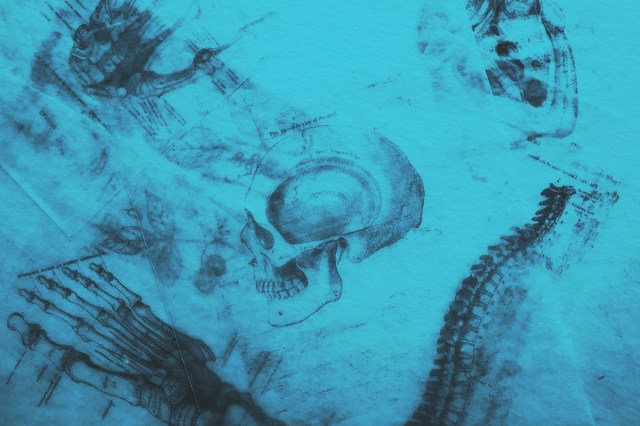
The human body is amazingly complex, made up of 11 organ systems, 206 bones, and more than 640 skeletal muscles. And that’s before you get to the molecular level, where we have approximately 37.2 trillion cells. Most of us know the basic names for major body parts, but there are definitely at least a few we skipped over in anatomy class. For instance, what’s the space between our eyebrows called? What about the one between your upper lip and nose? And is there a name for the white coloring at the bottom of your nails? The next time you’re at the doctor’s office, impress her by throwing out a few of these bodily names.
Imagine there’s an itch on your back that you can’t quite manage to scratch. It’s right in the middle and always seems just a little out of reach — that spot is your acnestis, quite possibly the reason back scratchers were invented. The name comes from an ancient Greek word for “spine,” or “backbone,” and has been in English medical textbooks since the mid-18th century. However, more recent usage is mostly humorous, as pointed out by a 1927 citation in the Oxford English Dictionary (OED): “That spot known to crossword solvers as the acnestis.” (The joke is that the obscure word would only be of use to regular word-game players.)
Hold your hand up, palm facing away, and spread your fingers. Look in between your thumb and index finger, and you’ll notice a triangular depression formed in the slight webbing at the base of the joining. This deepening is sometimes called the “anatomical snuffbox.” Years ago, when ground smokeless tobacco (snuff) was more in fashion, people would place the substance in that groove and ingest it through the nose.
The canthus is the inner point where the upper and lower eyelids meet. The little red blob at the inner canthus is called the “lacrimal caruncle,” or caruncula lacrimalis. It’s the tear duct and helps keep eyes moist.
“Dimples of Venus” refers to where the sacroiliac joints lie in the tailbone area, connecting the sacrum to the ilium in the pelvis. Confused by those terms, too? The dimples of Venus are the little divots on the lower back, right above the buttocks. They’re named after Venus — the Roman goddess of beauty, equivalent to Aphrodite in Greek mythology — as they’re believed to be a mark of beauty. You might know them as “back dimples,” or even “butt dimples.”
The glabella is the flat area above the nose and between the eyebrows. The name is Latin for “smooth,” which isn’t necessarily an accurate descriptor, as many people sport the occasional hair here (kudos to Frida Kahlo for keeping the unibrow forever cool). Here’s a helpful tip: If you gently pinch and lift your glabella and it remains tented, that’s a sign of dehydration.
The white semicircle at the base of your fingernails is the lunula. It gets its name from luna, Latin for “moon,” because of its crescent shape. It’s usually most noticeable on the thumbs, but many people’s lunulae (the plural comes from Latin) are covered by the cuticle (eponychium), so don’t worry if you can’t spot it.
The vertical groove stretching from the bottom of the nose to the top of the upper lip is the philtrum. The depth, length, and width of the philtrum has historically been used in facial readings (similar to palm readings) to derive certain characteristics; supposedly, a wide philtrum indicates luck.















